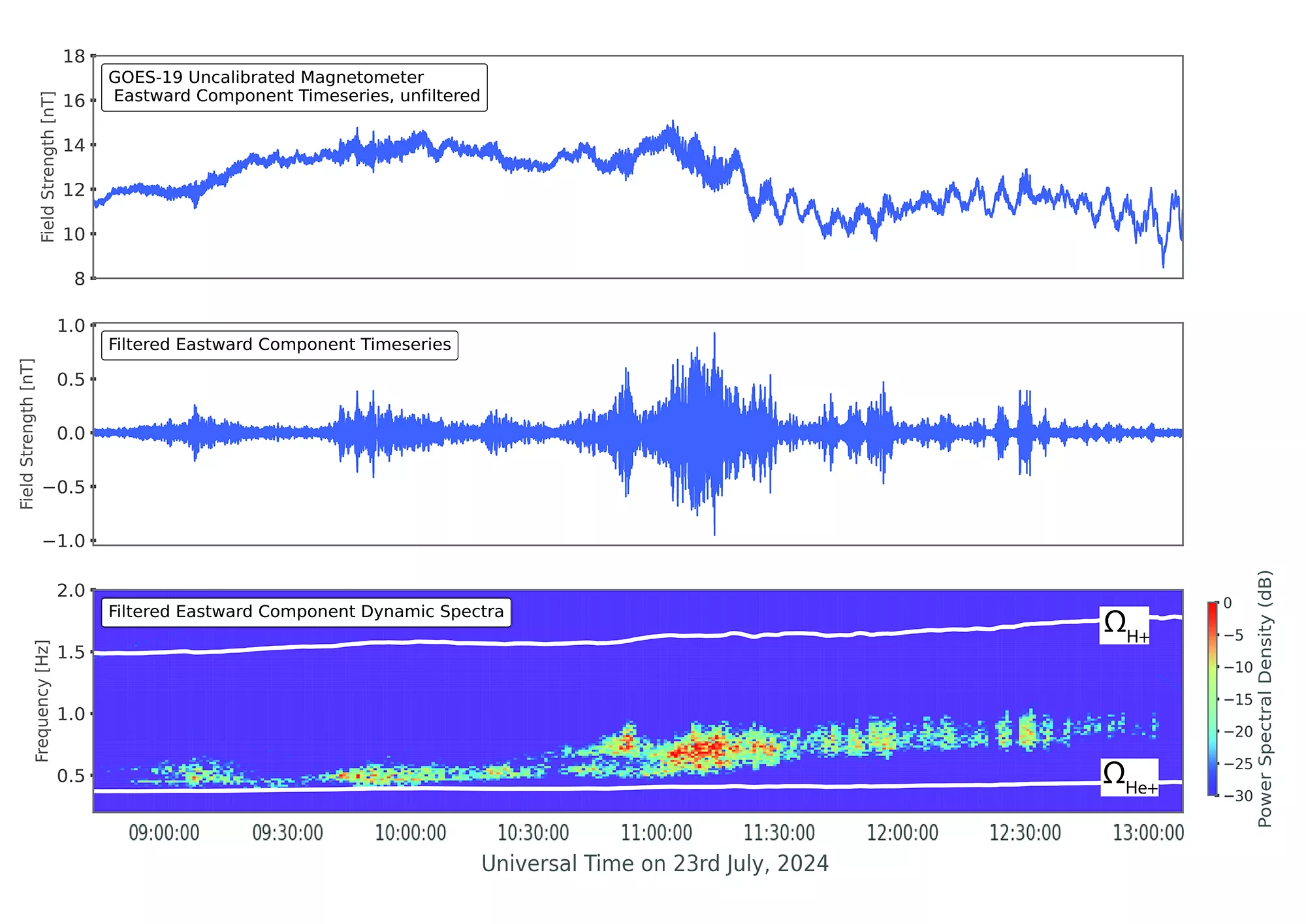The Goddard Magnetometer (GMAG) instrument, launched onboard NOAA’s GOES-19 satellite on June 25, 2024, is now transmitting magnetic field measurements down to Earth.

GOES-19, like its sister satellite GOES-18, carries an upgraded magnetometer instrument that provides improved measurements of Earth’s magnetic field over the magnetometers on earlier GOES-R series satellites.
The figure above shows data from the GOES-19 GMAG on July 23, 2024. The top and middle panels show the unfiltered and filtered Eastward component of the magnetic field, respectively. Data in the middle panel has been filtered to highlight a space weather phenomenon known as electromagnetic ion cyclotron (EMIC) waves. These waves play a significant role in controlling the levels of dangerous energetic particles that cause damage to satellites and harm astronauts. An important characteristic of these waves is their frequency, or how fast they oscillate up and down. This is shown in the bottom panel of the figure, where higher wave power levels are identified by the color bar. An example of an EMIC wave signal is shown in between the two white lines in the bottom panel, which indicate the frequencies that positively charged helium ions and protons circle the local magnetic field.
When these particular waves interact with the electrons, some will oscillate in a way that scatters highly energetic and dangerous electrons to decrease their threat to space-based assets. Other types of wave-particle interactions may accelerate highly energetic particles, increasing their threat. Space weather events generate both types of waves, making forecasting the level of energetic particles complex. In this particular event, the waves acted to scatter electrons and decrease their threat to orbiting satellites. GMAG space weather products can help to improve forecasts of the likelihood of elevated levels of dangerous energetic particles. GMAG observations also enable research into new space weather products.
After GOES-19 is assigned the operational role as NOAA’s GOES East satellite, GMAG data will help NOAA’s Space Weather Prediction Center better forecast the likelihood that elevated levels of dangerous energetic particles will occur during space weather events.